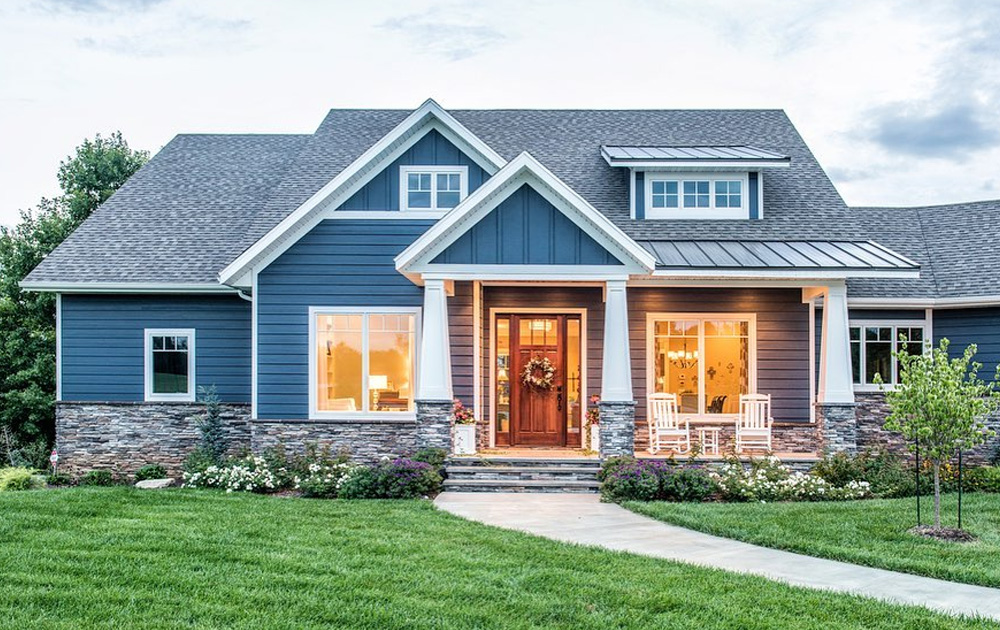
29 Oct Pros and Cons of Different Siding Materials
The siding materials you put on your home are more than just an eye-catching wrapper. When you consider things like long-term maintenance, cost, and durability, there’s a lot more to siding materials than appearance. Choose the wrong siding and you may be replacing it sooner than you hoped. Choose well, and your siding material can last for decades.
Today’s siding selection offers homeowners several options. For centuries, Iowa homeowners have used wood siding, however other contenders, like cement fiber board, and vinyl siding are gaining in popularity in the Quad Cities area. Each of these siding materials has its own unique set of characteristics and brings more than just good looks to the table.
Pros and Cons of Top Siding Materials
If you’re looking at replacing your current siding, or you’re building a new home and need to choose your siding, weighing the pros and cons is overwhelming. We’ve put together a list of the top 3 siding materials, along with those advantages and disadvantages that hold weight with homeowners.
Wood Siding
The original siding material remains one of the most popular. Natural wood siding materials remain popular due to their availability, ease of installation on new builds, and attractive appearance. Here, we break down the pros and cons of this popular siding material.
Pros of Wood Siding
- Wood is Durable: With periodic maintenance and the proper care, your wood siding can last for decades.
- Versatility of Design: Due to wood’s pliable nature, your siding can be customized to take on a variety of shapes and designs. Wood siding can be installed vertically, horizontally, or on the diagonal, as you wish.
- Ease of Replacement: Should a board become damaged, or exhibit signs of rot, or insect damage, the boards are easily replaced.
Wood Siding Cons
- Maintenance: A huge disadvantage to wood siding is the maintenance. Without the proper care, your wood siding will fall victim to wood rot and other unsightly deterioration. Maintaining your home’s exterior will require regular painting, staining, or some other type of preservative treatment.
- Cost: There are wood siding materials that come in on the cheaper side of the scale, however they are often inferior. The better grades of wood siding, which is recommended for harsher climates, can be fairly pricey. Initial installation costs can also be high.
Vinyl Siding
Today’s vinyl siding materials have come a long way. These days it can be difficult to determine whether a home is sided in vinyl or wood, the resemblance is that close. Here are the advantages, and disadvantages to using vinyl siding on your home.
Pros of Vinyl
- Vinyl is Low Cost: From the initial cost of the siding itself, to installation, vinyl comes in as the more cost-effective of these siding materials, at least initially.
- Vinyl is Virtually Maintenance-Free: Vinyl siding requires little care, beyond occasional washing. There’s no need to paint, or apply protective coating. Vinyl keeps its appearance fairly well, and performs the task of keeping your home safe and dry for decades.
- Water Repellent: The water-repelling nature of vinyl makes this siding a great option in Iowa. Torrential rains, driving snow, and soggy springtime weather will not penetrate your vinyl siding.
Cons of Vinyl
- Not Insulating in Colder Climes: Vinyl does insulate, up to a point. In frigid temperatures vinyl does have a tendency to become brittle. This can lead to cracks and fissures which compromise vinyl’s insulating and protective nature.
- Difficult to Replace: Although vinyl is maintenance-free, the color will fade over time. This can make replacing damaged sheets difficult, as it often doesn’t match when replacing with the original color.
- Can Become Damaged: If not properly installed, vinyl siding can become loose in a windstorm. Also, vinyl is not impervious to dents or cracks from impact.
Cement Fiber Board
This prefabricated siding is made from a mix of sand and fibers from wood and cardboard. Cement fiber creates a siding that’s versatile and protective. Unlike other siding materials cement fiber is non-flammable and eye-appealing. Here are some of the benefits, and consequences, to choosing cement fiber board.
Pros of Cement Fiber
- Durability: Even in the harshest weather conditions fiber holds its appearance and structure, and protects your home.
- Impervious to Rot and More: Overlapping seams effectively shut out mold and mildew, and create a barrier from allergens. Fiber board also prevents insect damage to your home’s exterior, and will not succumb to wood rot.
- Eco-Friendly: Cement fiber board re-purposes wood waste fibers which would otherwise be discarded into a landfill. Low maintenance also contributes to cement fiber’s sustainable nature. You can go longer periods between painting than with wood, and there’s no need for preserving your fiber siding.
- Maintenance: There will generally not be a need for much maintenance. Quality cement fiber siding often lasts for 50 years or more.
Cons of Cement Fiber
- Cost: The biggest disadvantage to cement fiber over other siding materials is the initial cost. You will need to have your siding installed by a professional, as it does require specialized installation tools. The cost of the siding itself is also fairly high, however you will see a return on your investment, over time, from the low maintenance costs.
- Maintenance: There will generally not be a need for much maintenance but, unlike vinyl, repainting may be required after fifteen or twenty years for some products.
Choose Well
Siding can do more for your home, in the way of resale value, curb appeal, and maintenance, than almost any other upgrade. It defends, and protects the interior, is easily renewed with a good power wash, or repainting, and, in some cases, boosts your home’s energy efficiency.

